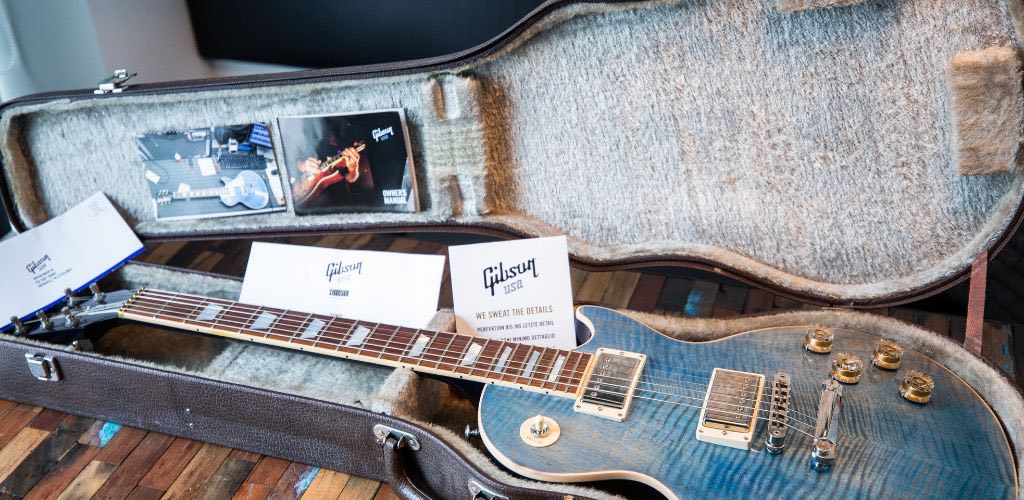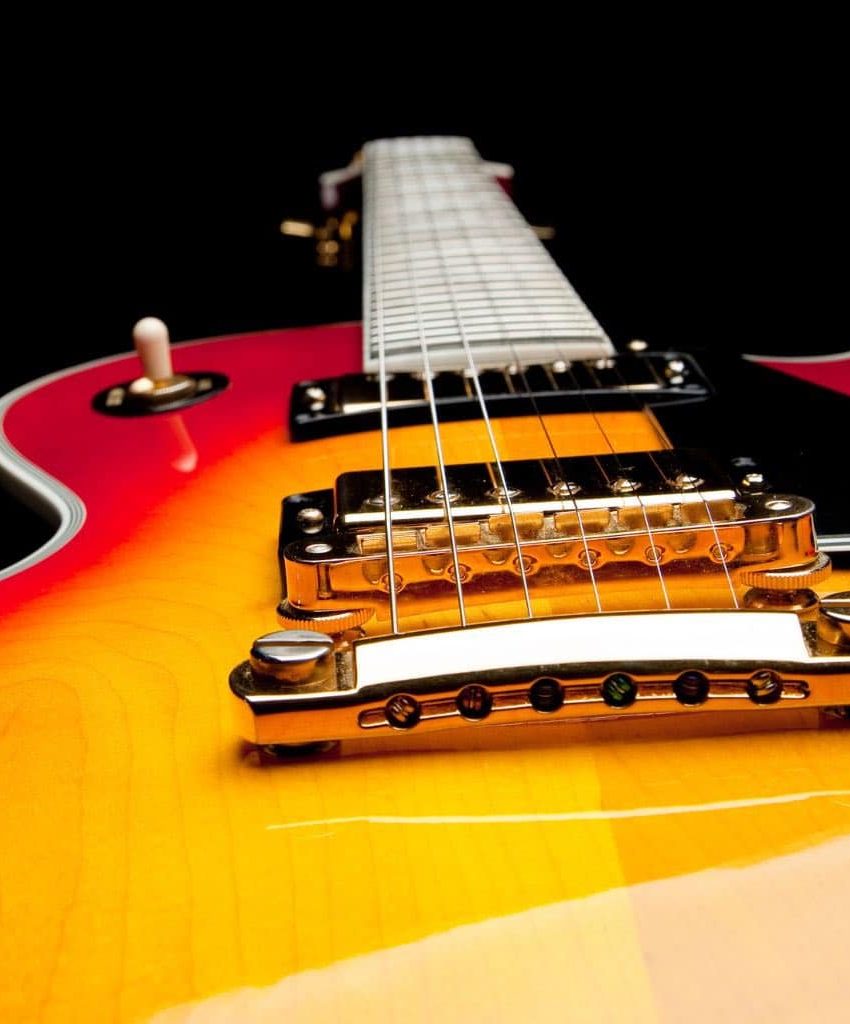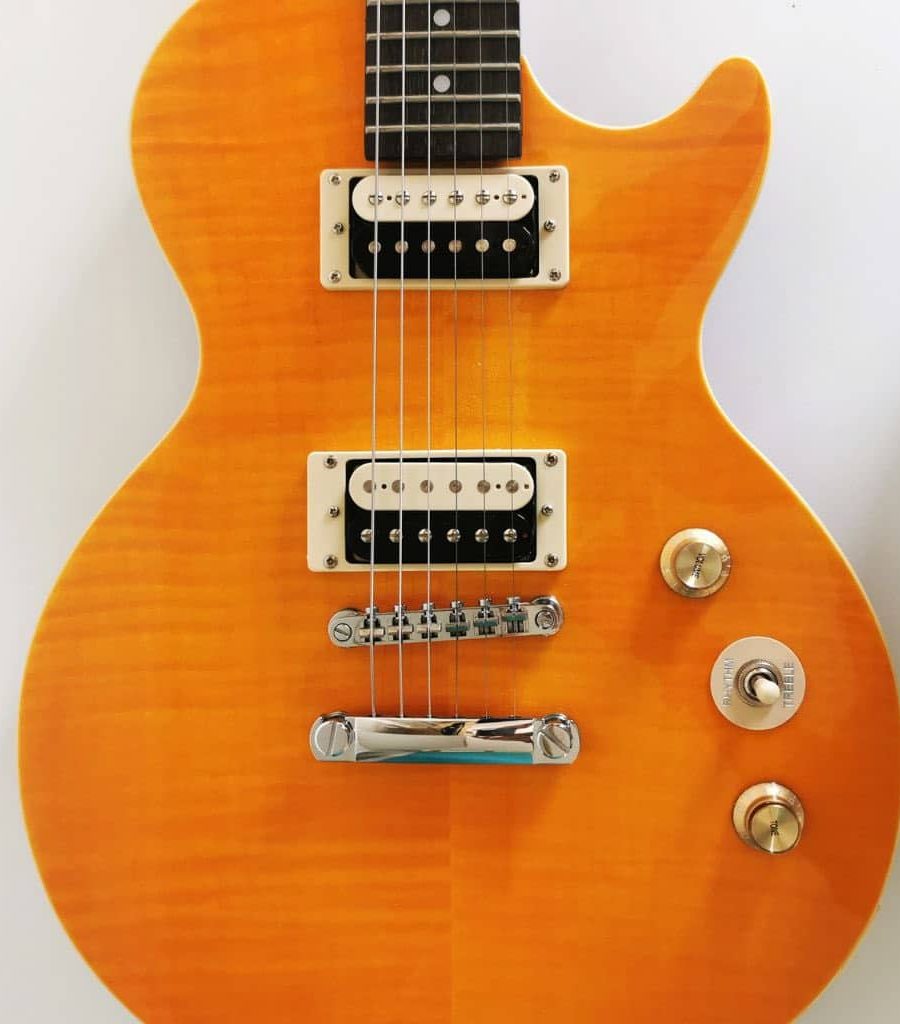Get ready to meet the guitar that’s more resilient than a cockroach at a nuclear party: the legendary Les Paul!

This iconic instrument has survived the test of time, defying trends and generations like a rock star refusing to retire. From the smoky bars of the ’50s to the biggest stages in the world, Les Paul has been the trusty sidekick of legends, delivering riffs that could make even the most stoic listeners weep.
Prepare for the electrifying story of the guitar that refused to die—because it’s not just an instrument; it’s a rock ‘n’ roll legend!
The Ultimate Icon in Music History
Gibson Custom 1958 Les Paul Standard Reissue VOS, Washed Cherry Sunburst #841240

FEATURES: Handcrafted reissue with premium tonewoods and meticulous detail
OTHER INFO: Includes a Gibson Custom Shop case
- Exceptional build quality and attention to detail
- Warm, rich vintage tone with versatile sound
- Comfortable '50s neck profile for smooth playability
- Heavy weight typical of Les Paul models
When you click ‘Check Price’, you’ll see there are loads of great places to buy this item. Our personal favorite is Sweetwater for the US, and Thomann and Gear4Music for the UK & Europe.
They are the largest music retailers, with excellent customer service, competitive prices, really fast shipping, and the longest guarantees.
The professional musician who wrote this article combined many things,
from the product build, manufacturer’s reputation through to feedback
from other users, to create our famous TedScore™.

Introduced in 1952, the Gibson Les Paul has earned its place as one of the most iconic electric guitars in music history, transcending genres from jazz to rock and metal. Known for its rich, warm tone and powerful sustain, the Les Paul has been the choice of countless legendary musicians, including Jimmy Page, Slash, and Les Paul himself.
Its distinctive single-cutaway body and set neck design not only contribute to its stunning aesthetics but also enhance playability and sound quality. Whether it’s the smooth jazz solos or the heavy riffs of rock and metal, the Les Paul delivers versatility that appeals to a wide range of players.
With its enduring legacy and timeless appeal, Les Paul continues to inspire new generations of musicians to pick up the instrument and make their mark. It’s not just a guitar; it’s a symbol of musical innovation and creativity that refuses to go out of style.
From 'The Log' to Legend
In the 1940s, Les Paul first built “The Log,” a primitive solid-body guitar prototype that would go on to inspire modern electric guitar designs. This innovative creation featured a simple yet effective structure that showcased the potential for sustain and tone that hollow-body guitars could not achieve.

Initially, Gibson rejected Paul’s designs, favoring their traditional hollow-body models, which limited their sound capabilities. However, the landscape of the guitar world began to shift when Fender found success with the Esquire, a solid-body model that captured the attention of musicians everywhere.
This success prompted Gibson to reconsider their approach, leading them to collaborate with Paul to develop their solid-body guitar. The result was the iconic Gibson Les Paul, which combined Paul’s visionary ideas with Gibson’s craftsmanship, forever changing the course of electric guitar history.
Today, “The Log” stands as a testament to innovation and creativity, reminding us of the bold steps that paved the way for the electric guitars we know and love.
The Birth of the Les Paul Guitar and Its Evolution to the Custom Model
In 1951, Gibson’s president, Ted McCarty, teamed up with Les Paul to create a stylish, high-quality, solid-body guitar that would become a game-changer in the music world. This collaboration resulted in the first Les Paul model, which boasted a mahogany body, a maple cap, a set-neck design, and two P-90 pickups, all enhanced by elegant details like a striking gold finish.
However, the initial design had some flaws that affected its performance and playability. By 1953, these issues were addressed with the introduction of the Les Paul Custom, which featured improved specifications and a more refined aesthetic.
The Les Paul Custom quickly became a favorite among musicians, solidifying Les Paul’s reputation as an iconic instrument. This evolution marked a significant milestone in electric guitar history, showcasing the continuous innovation and dedication to quality that defined Gibson and Les Paul’s partnership.


The 1958 Les Paul Standard
The 1958 Les Paul Standard marked a significant evolution in guitar design with the introduction of the iconic “sunburst” finish, which added a stunning visual appeal that captivated musicians and collectors alike.

Alongside this eye-catching aesthetic, the addition of humbucker pickups transformed the guitar’s sound, delivering a warmer and fuller tone that became a favorite among rock and blues players. This combination of style and sonic quality contributed to the Les Paul Standard’s reputation as a highly desirable instrument.
Today, vintage models from 1958 are considered some of the most valuable guitars in the world, sought after by collectors and musicians for their exceptional craftsmanship and historical significance. The legacy of the 1958 Les Paul Standard continues to influence guitar design and playing styles, solidifying its place in music history.
The Norlin Era:
A Controversial Chapter in Gibson's Legacy

The “Norlin Era” from 1969 to 1986 marked a tumultuous period for Gibson. It was characterized by significant cost-cutting measures that led to controversial changes in the Les Paul design.
During this time, the company implemented alterations such as the use of cheaper materials and modifications to the construction process, which many players felt compromised the guitar’s quality and craftsmanship. These changes sparked dissatisfaction among musicians and collectors, leading to a decline in the Les Paul’s once-stellar reputation.
As a result, public opinion became polarized, with some arguing that the newer models lacked the tonal richness and playability of their vintage predecessors. Despite these challenges, the Norlin Era also saw the introduction of innovative features and designs that would later influence the evolution of the Les Paul.
How Gibson Restored the Les Paul's Iconic Status After Near-Bankruptcy
After a near-bankruptcy in 1986, Gibson’s new ownership took decisive steps to restore the company’s reputation by emphasizing quality and craftsmanship. This revitalization included the introduction of vintage reissues and the establishment of the Custom Shop, which allowed for meticulous attention to detail and authenticity.
As a result, the Les Paul’s reputation was significantly boosted, attracting both new musicians and collectors alike. Despite the challenges it faced over the years, the Les Paul continues to be celebrated as an enduring classic, cherished for its rich tone and iconic status.

Its historical significance in modern music is undeniable, as it has been the choice of countless legendary artists across various genres. Today, the Les Paul stands as a testament to resilience and innovation in the world of electric guitars.
Legacy of a Legend:
The Timeless Impact of the Gibson Les Paul in Music History
The Gibson Les Paul has genuinely solidified its status as the ultimate icon in music history, transcending genres and inspiring generations of musicians.

From its innovative beginnings with “The Log” to the refined craftsmanship of the Les Paul Custom, each iteration has contributed to its legendary reputation. Despite facing challenges during the Norlin Era, the guitar’s enduring legacy was restored through a renewed emphasis on quality and authenticity.
Today, the Les Paul remains a symbol of musical innovation, cherished for its rich tone and historical significance. Its profound influence on guitar design and playing styles ensures that it will continue to captivate musicians and collectors for years to come.
The Les Paul is not just an instrument; it embodies the spirit of creativity and resilience in the world of music.











Man, from ‘The Log’ to legendary status. If only my old mix tapes could make the same leap.
Love my ’58 reissue. It’s like holding a piece of history. The craftsmanship is unbeatable.
yeah, totally rocks!
right on! they really don’t make them like they used to. the ’58s are special.
Interesting article, Lewis Turner. I’m curious about the specific impacts of the Norlin Era on the Les Paul’s design that fans found so controversial. Can you delve deeper into that?
very cool to see how the les paul evolved from ‘the log’ to what it is today. kind of fascinating how something so simple could kickstart a whole new era in music. gives a lot of credit to les paul’s vision and innovation. wonder what he’d think about where music’s at now with all these advancements.